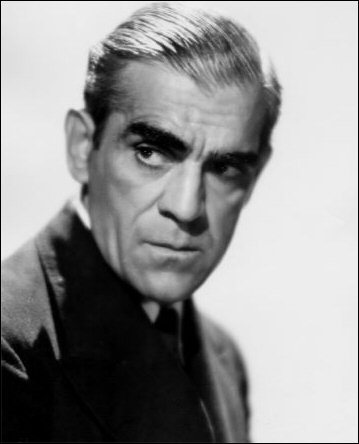| Page: |
| Home > MS Trials & Testing > MS hardware configuration | |||||||
 (2)[/url] by [url=https://www.flickr.com/photos/150672766@N03/]Rod Sugden[/url], on Fli) 5988 Posts Member #: 2024 Formally Retired Rural Suffolk |
5th Feb, 2008 at 02:12:22pm
I've searched but can't find a definite answer but there was this..
On 30th Dec, 2007 Paul S said:
If that's the case then, be sure to get the MS2 processor and two ignition drivers in the kit. You will need to configure it for VR sensor input. My question is the ignition driver(s)... The standard kit just has the one VB921 so would need the EDIS module as well as a coil pack (or a single coil and dizzy) and I like the idea of driving the coil pack direct. The MS2-E code supports the use of multiple VB921 for wasted spark coil packs or even COP, and I'm quite happy with the hardware mods required (I have held off from building my output circuitry until I got my head around this) so... Does the Siamese Code also support multiple direct ignition outputs? I've bought the extra bits, just want to be sure before I solder it all together !!! Finally, is it worth adding any extra inputs/outputs at the build stage (there seem to be plenty of options on the MS-2) to "future proof" it ??? Rod. Schrödinger's cat - so which one am I ??? |
||||||
|
8604 Posts Member #: 573 Formerly Axel Podland |
5th Feb, 2008 at 05:14:35pm
Rod,
Saul Bellow - "A great deal of intelligence can be invested in ignorance when the need for illusion is deep."
|
||||||
 (2)[/url] by [url=https://www.flickr.com/photos/150672766@N03/]Rod Sugden[/url], on Fli) 5988 Posts Member #: 2024 Formally Retired Rural Suffolk |
5th Feb, 2008 at 06:02:33pm
Ooops,
Schrödinger's cat - so which one am I ??? |
||||||
|
8604 Posts Member #: 573 Formerly Axel Podland |
5th Feb, 2008 at 06:25:36pm
Actually, I think that the cam sensor is a good idea, not sure how it would be configured as an input though. Could be a second VR or a switch type input.
Edited by Paul S on 5th Feb, 2008. Saul Bellow - "A great deal of intelligence can be invested in ignorance when the need for illusion is deep."
|
||||||
 (2)[/url] by [url=https://www.flickr.com/photos/150672766@N03/]Rod Sugden[/url], on Fli) 5988 Posts Member #: 2024 Formally Retired Rural Suffolk |
5th Feb, 2008 at 07:08:38pm
Cam sensor is the one I was thinking of as I have a feeling it "may" ultimately become necessary. I'm thinking it would be a simple Hall/switch input (it doesn't need to be that accurate with VR on the crank) so I'm going to try and get my head around the V3.0 board schematics to see if the Hall circuitry that is not used when you jumper for VR, can actually be used as a second input.
Schrödinger's cat - so which one am I ??? |
||||||
|
8604 Posts Member #: 573 Formerly Axel Podland |
17th Jun, 2008 at 10:18:13am
On 5th Feb, 2008 retired said:
Cam sensor is the one I was thinking of as I have a feeling it "may" ultimately become necessary. I'm thinking it would be a simple Hall/switch input (it doesn't need to be that accurate with VR on the crank) so I'm going to try and get my head around the V3.0 board schematics to see if the Hall circuitry that is not used when you jumper for VR, can actually be used as a second input. Rod. Rod, Did you ever bottom out if it is possible to use the redundant Hall crcuitry to drive a second input? Saul Bellow - "A great deal of intelligence can be invested in ignorance when the need for illusion is deep."
|
||||||
|
1267 Posts Member #: 831 Post Whore Montreal, Canada |
17th Jun, 2008 at 02:42:31pm
Yes it can with the right jumpers to the CPU and to a free DB37 pin. |
||||||
|
8604 Posts Member #: 573 Formerly Axel Podland |
17th Jun, 2008 at 02:57:52pm
I think that I need to do the following:
Saul Bellow - "A great deal of intelligence can be invested in ignorance when the need for illusion is deep."
|
||||||
|
1267 Posts Member #: 831 Post Whore Montreal, Canada |
17th Jun, 2008 at 03:06:08pm
There are a few different configurations for Hall sensors. The manual shows the different ones which depend on the sensor you have.
|
||||||
 (2)[/url] by [url=https://www.flickr.com/photos/150672766@N03/]Rod Sugden[/url], on Fli) 5988 Posts Member #: 2024 Formally Retired Rural Suffolk |
17th Jun, 2008 at 06:00:39pm
On 17th Jun, 2008 Paul S said:
Rod, Did you ever bottom out if it is possible to use the redundant Hall crcuitry to drive a second input? Sorry, only just spotted this (it was started from an old thread....) I've wired mine up for an "opto" input as the second position sensor using OPTOIN on JS10 for MS-Extra. EDIT - that should say OptoOUT to JS10 .....! As my learnng curve increases... I think Opto or Hall are the same (ie, a simple on/off input, rather than VR) and I am intending to use a simple optical trigger (slotted IR switch from RS) on a wheel on top of the old dizzy drive BUT, I haven't yet figured out how to implement this... My main problem is I'm way behind you, although my MS is 99% finished, the shell this is all going into needs a lot of work yet, the engine isn't finished, the wiring loom is still a sketch on a piece of paper, I haven't yet got all the bits of aluminium I need to fabricate the inlet and plenum/injectors, and Wifey has given me a deadline on the bathroom "rebuild"..... I've got the sketches somewhere of how I rewired the MS to give me two inputs if it helps... Rod. Edited by Rod S on 18th Jun, 2008. Schrödinger's cat - so which one am I ??? |
||||||
|
8604 Posts Member #: 573 Formerly Axel Podland |
17th Jun, 2008 at 06:14:11pm
Thanks.
Saul Bellow - "A great deal of intelligence can be invested in ignorance when the need for illusion is deep."
|
||||||
 (2)[/url] by [url=https://www.flickr.com/photos/150672766@N03/]Rod Sugden[/url], on Fli) 5988 Posts Member #: 2024 Formally Retired Rural Suffolk |
17th Jun, 2008 at 06:31:31pm
So....
Schrödinger's cat - so which one am I ??? |
||||||
|
8604 Posts Member #: 573 Formerly Axel Podland |
17th Jun, 2008 at 06:38:05pm
Yes, I think that we will need a cam signal to get the Siamese code working correctly.
Saul Bellow - "A great deal of intelligence can be invested in ignorance when the need for illusion is deep."
|
||||||
 (2)[/url] by [url=https://www.flickr.com/photos/150672766@N03/]Rod Sugden[/url], on Fli) 5988 Posts Member #: 2024 Formally Retired Rural Suffolk |
17th Jun, 2008 at 06:51:16pm
Good,
Schrödinger's cat - so which one am I ??? |
||||||
 (2)[/url] by [url=https://www.flickr.com/photos/150672766@N03/]Rod Sugden[/url], on Fli) 5988 Posts Member #: 2024 Formally Retired Rural Suffolk |
18th Jun, 2008 at 09:04:39am
Right,
Schrödinger's cat - so which one am I ??? |
||||||
|
8604 Posts Member #: 573 Formerly Axel Podland |
18th Jun, 2008 at 09:15:43am
The way that you are doing it will require a 12v signal through the opto switch.
Saul Bellow - "A great deal of intelligence can be invested in ignorance when the need for illusion is deep."
|
||||||
 (2)[/url] by [url=https://www.flickr.com/photos/150672766@N03/]Rod Sugden[/url], on Fli) 5988 Posts Member #: 2024 Formally Retired Rural Suffolk |
18th Jun, 2008 at 09:49:25am
Yes, I will require either 12V or 5V through my optoswitch that's why I'm undecided whether to power it from the MS board or from the main loom.
Schrödinger's cat - so which one am I ??? |
||||||
|
8604 Posts Member #: 573 Formerly Axel Podland |
18th Jun, 2008 at 10:00:55am
Yes, whichever way the hall switch operates will determine how I mod the board.
Saul Bellow - "A great deal of intelligence can be invested in ignorance when the need for illusion is deep."
|
||||||
 (2)[/url] by [url=https://www.flickr.com/photos/150672766@N03/]Rod Sugden[/url], on Fli) 5988 Posts Member #: 2024 Formally Retired Rural Suffolk |
18th Jun, 2008 at 11:09:33am
You've got me going again anyway...
Schrödinger's cat - so which one am I ??? |
||||||
|
8604 Posts Member #: 573 Formerly Axel Podland |
25th Jun, 2008 at 09:54:50pm
I'm using the equivalent of a Siemens HKZ101 Hall sensor that is now made by Chenyang and is a HME301 as shown in this document:
Saul Bellow - "A great deal of intelligence can be invested in ignorance when the need for illusion is deep."
|
||||||
 12307 Posts Member #: 565 Carlos Fandango Burnham-on-Crouch, Essex |
25th Jun, 2008 at 10:02:38pm
i spent ages dicking around the other day until i realised my hall sensor "pulls down"
On 28th Aug, 2011 Kean said:
At the risk of being sigged... Joe, do you have a photo of your tool? http://www.turbominis.co.uk/forums/index.p...9064&lastpost=1 https://joe1977.imgbb.com/ |
||||||
|
8604 Posts Member #: 573 Formerly Axel Podland |
25th Jun, 2008 at 10:06:57pm
WTF does "pull down" mean.
Saul Bellow - "A great deal of intelligence can be invested in ignorance when the need for illusion is deep."
|
||||||
 12307 Posts Member #: 565 Carlos Fandango Burnham-on-Crouch, Essex |
25th Jun, 2008 at 10:15:32pm
lol,
On 28th Aug, 2011 Kean said:
At the risk of being sigged... Joe, do you have a photo of your tool? http://www.turbominis.co.uk/forums/index.p...9064&lastpost=1 https://joe1977.imgbb.com/ |
||||||
|
1267 Posts Member #: 831 Post Whore Montreal, Canada |
25th Jun, 2008 at 10:20:25pm
On 25th Jun, 2008 Paul S said:
I'm using the equivalent of a Siemens HKZ101 Hall sensor that is now made by Chenyang and is a HME301 as shown in this document: From what I can make out this outputs a voltage when the vane passes through the gap. I struggle with the terminology, what does "open collector" mean? In this case I will use Rod's circuit above, I think. They show in the document the need for a pullup resistor. That's because it is open collector. If you use Rod's circuit, you'll have to put the pull up somewhere. What you can do instead is to use the MS/extra circuit shown here: . Jean |
||||||
 (2)[/url] by [url=https://www.flickr.com/photos/150672766@N03/]Rod Sugden[/url], on Fli) 5988 Posts Member #: 2024 Formally Retired Rural Suffolk |
26th Jun, 2008 at 12:52:21am
I couldn't actually see the internal circuit diagram on the datasheet until Adobe had downloaded 6 million foreign fonts......
Edited by Rod S on 26th Jun, 2008. Schrödinger's cat - so which one am I ??? |
||||||
| Home > MS Trials & Testing > MS hardware configuration | |||||||
|
|||||||
| Page: |

